Schizachyrium pseudeulalia
(Hosok.) S.T.Blake
A tufted or single stemmed, slender annual, common on sandy soils throughout the savanna regions of northern Australia. Erect, up to 90 cm tall or lying along the ground. Leaves narrow and arising from the base and along the stems (Fig. 1). Stems give rise to one or a few separate flowering spikes each enclosed or partially enclosed in a leaf-like sheath (or spatheole) (Fig. 2). The basic flowering units (spikelets) are arranged in compact pairs, each pair arranged one after the other in what appears to be a solid flowering spike (Fig. 2&3). The flowering spike becomes fragile with age and breaks apart between the spikelet pairs (Fig. 4). Each spikelet pair consists of a stalkless spikelet, a stalked spikelet and a segment of the flowering stem (internode) (Fig. 4 & 5). The spikelet pairs are usually glabrous (Fig. 5a) or have long hairs at the base of the glumes and pedicels (Fig. 5b). Usually the spikelet characters are difficult to distinguish without careful dissection and access to magnification. The stalkless spikelet is characterised by a large lower glume, flattened from front to back (so that the spikelet is wider than deep), with no flaps or wings present along the lower glume edges and the upper half of the glume tapering or abruptly narrowing into a fine tip (Fig. 5a.iii & b.iii). The stalkless spikelet contains 1 fertile floret (a modified grass flower), with a distinct awn or bristle which is bent along a 1/3 to a half of its length (Fig. 4 & 5). The stalked spikelet consists of a single glume only and tapered into a bristle or awn (Fig. 5). This glume is much smaller than the glume on the stalkless spikelet, although it can seem larger as it is difficult to distinguish between the stalk and the glume (Fig. 5a.ii). Be aware that the terminal spikelet cluster occuring at the tip of each flowering spike will often have two companion spikelets and this does not reflect the typical spikelet arrangement described above.
Botanical Description (ATH)
Annual. Culms erect, stature slender to delicate, to 90 cm tall. Leaf blades 0.8-9 cm long, 0.5-5.5 mm wide, flat or conduplicate, surface scaberulous or smooth. Inflorescence a rame (an unbranched inflorescence in which the main axis produces a series of paired spikelets, one sessile and one pedicellate, the oldest at the base and the youngest at the top), 1.5-5 cm long, 5-10 segments (Fig. 2 & 3). Sessile spikelets 4-8 mm long, narrowly ovate to ovate-oblong, dorsally compressed, lower glume not winged, lemma awn 11-30 mm long (Fig. 5a.iii & 5b.iii). Pedicelled or companion spikelet on stalk longer than spikelet, spikelet of glume only 1-1.7 mm long, awn 3-15 mm long (Fig. 5a.ii & 5b.ii). The rhachis internode is typically glabrous or with long pilose hairs at the base or on sides but not bearded on an angle, and clavate (club-shaped), quite slender and tapered at the base and eventually broadening towards the tip (Fig.5a.iv & b.iv ).
Diagnostic Features (ATH)
The slender flowering spikes emerging from a leaf like sheath are characteristic of most Schizachyrium species seen in northern Australia. From a distance the hairy specimens of this species could be confused with Mnesithea formosa (see profile in this series), however, close examination will show that Mnesithea formosa spikelets have no bristles (are awnless) and are not partially enclosed within a spatheole or leaf like sheath when mature. Schizachyrium pseudeulalia, like Schizachyrium fragile, can dominate the ground layer in large patches (Fig. 8). It is typically more delicate and slender than Schizachyrium fragile, lacks the diagonal arc of long hairs crossing lengthways along the internode of that species, and is not winged or marginate (slightly thickened margin) along the lower glume of the sessile spikelet (see profile in this series).
Distinguishing Schizachyrium pseudeulalia from other species in the genus requires mature spikelets, dissection of the spikelet pair, attention to detail and access to magnification. Although described as having dorsally compressed sessile spikelets, i.e. the spikelets are wider than they are deep, this is not always easy to determine and hairy narrow specimens of S. pseudeulalia can easily be confused with Schizachyrium dolosum (Fig. 6a & b). Of the two species Schizachyrium pseudeulalia has many more recent collections and can be distinguished by: the slightly lumpy textured surface on the lower glume of the sessile spikelet, compared to smooth in S. dolosum; the more narrowly tapered apex than S. dolosum (Fig. 6a.iii); and the more slender and tapered club-shaped internode than S. dolosum (Fig. 6a.iii&6b). Another slender species which may be confused with S. pseudeulalia is S. crinizonatum, it is readily distinguished by the horizontal band of long hairs above the middle of the stalked spikelet and the internode (Fig. 7a & b).
Identification keys to other species in the area can be found at Simon & Alfonso (2011).
Natural Values (CYNRM, ATH, others)
The species in this genus are collectively referred to as firegrass in Crowley et al (2004) and are considered a critical food source for the golden shouldered parrot. Schizachyrium species produce large amounts of seed which persist through the dry season. They provide an important food source for many seed-eating specialists from the early dry season up to when the seeds start to germinate in the early wet season. Although recorded as being grazed by stock they are not considered a valuable fodder species, probably because they offer little in the amount of bulk for grazing stock (Simon 1992, Rolfe 1997, Milson 2000, Lazarides 2002).
Habitat
A fairly common annual on sandy soil in tropical Australia and subtropical coastal Qld (Simon & Alfonso 2011).
Garnett ST and Crowley GM. 2002. Recovery Plan for the golden-shouldered parrot Psephotus chrysopterygius 2003-2007. Report to Environment Australia, Canberra. Queensland Parks and Wildlife Service, Brisbane.
Hooker, Nanette B. (2016) Grasses of Townsville. James Cook University, Townsville, QLD, Australia.
Lazarides, M. (2002). Economic attributes of Australian grasses. Flora of Australia 43: 213-245.
Milson, J. (2000). Pasture plants of north-west Queensland. Information Series Q100015. Queensland Department of Primary Industries.
Rolfe, J., Golding, T. and Cowan, D. (1997). Is your pasture past it? The glove box guide to native pasture identification in north Queensland. Information Series Q197083. Queensland Department of Primary Industries.
Simon, B.K. in Wheeler, J.R. (ed.) (1992), Schizachyrium. Flora of the Kimberley Region: 1215
Simon, B.K. & Alfonso, Y. (2011) AusGrass2, http://ausgrass2.myspecies.info/accessed on [8 February 2018].
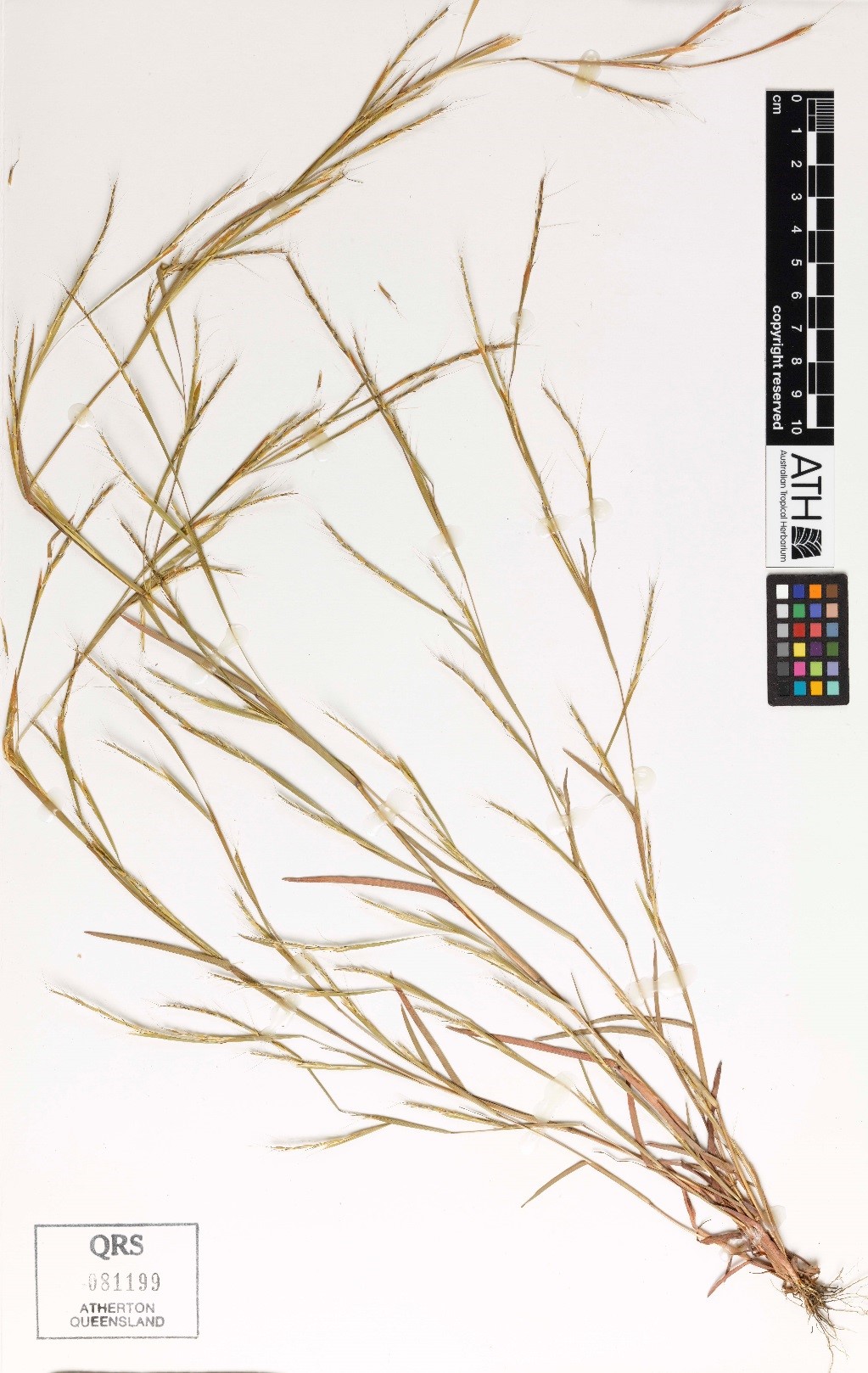
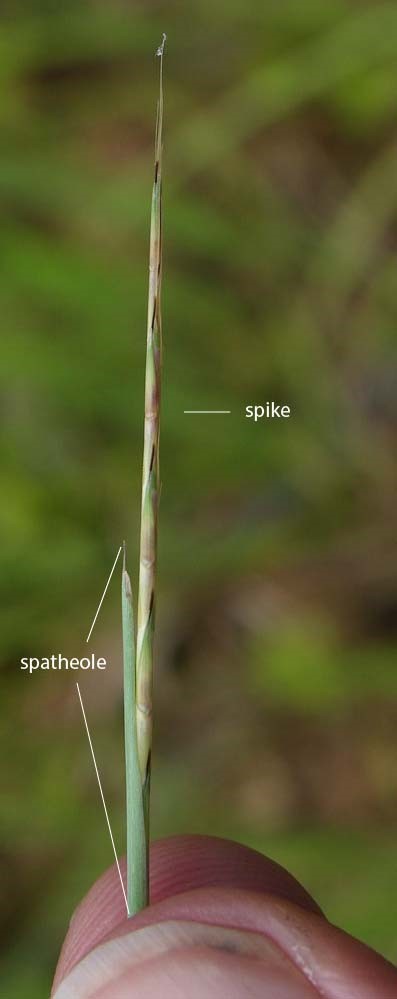
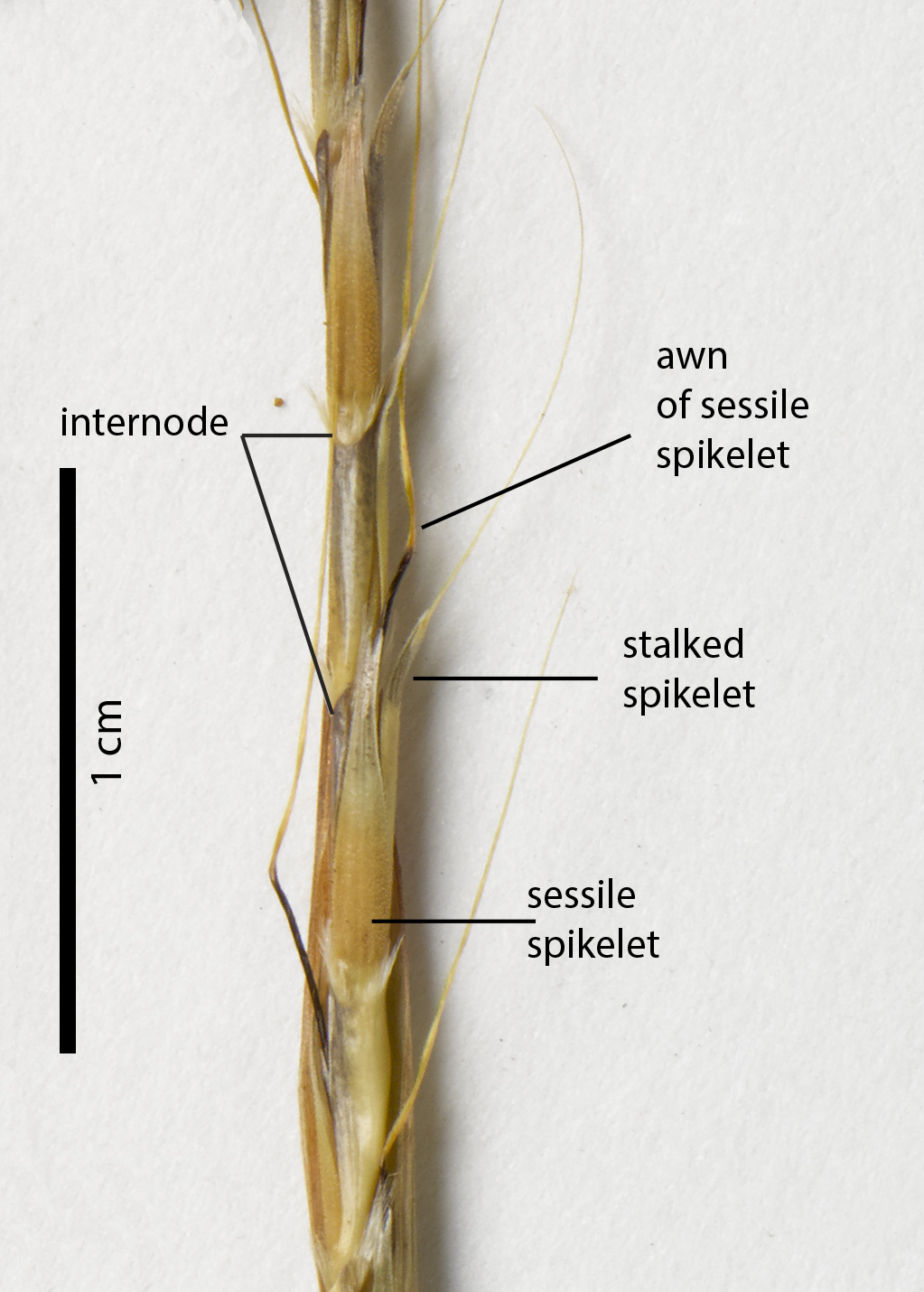

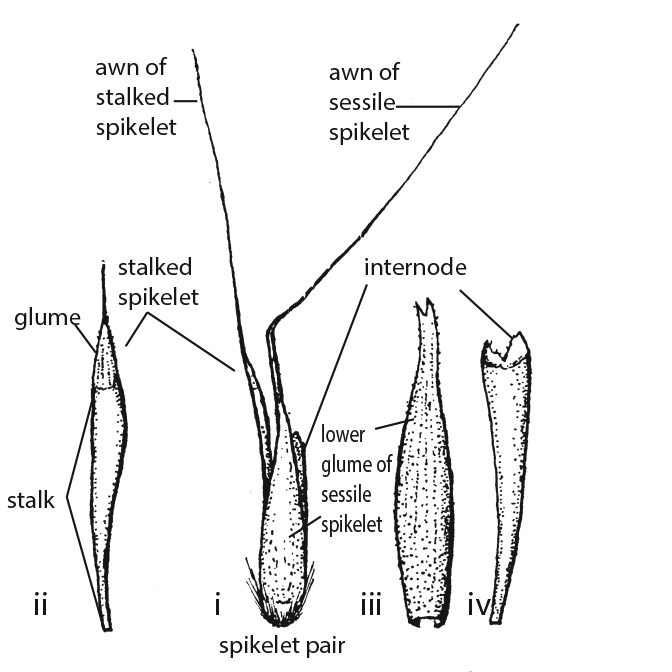



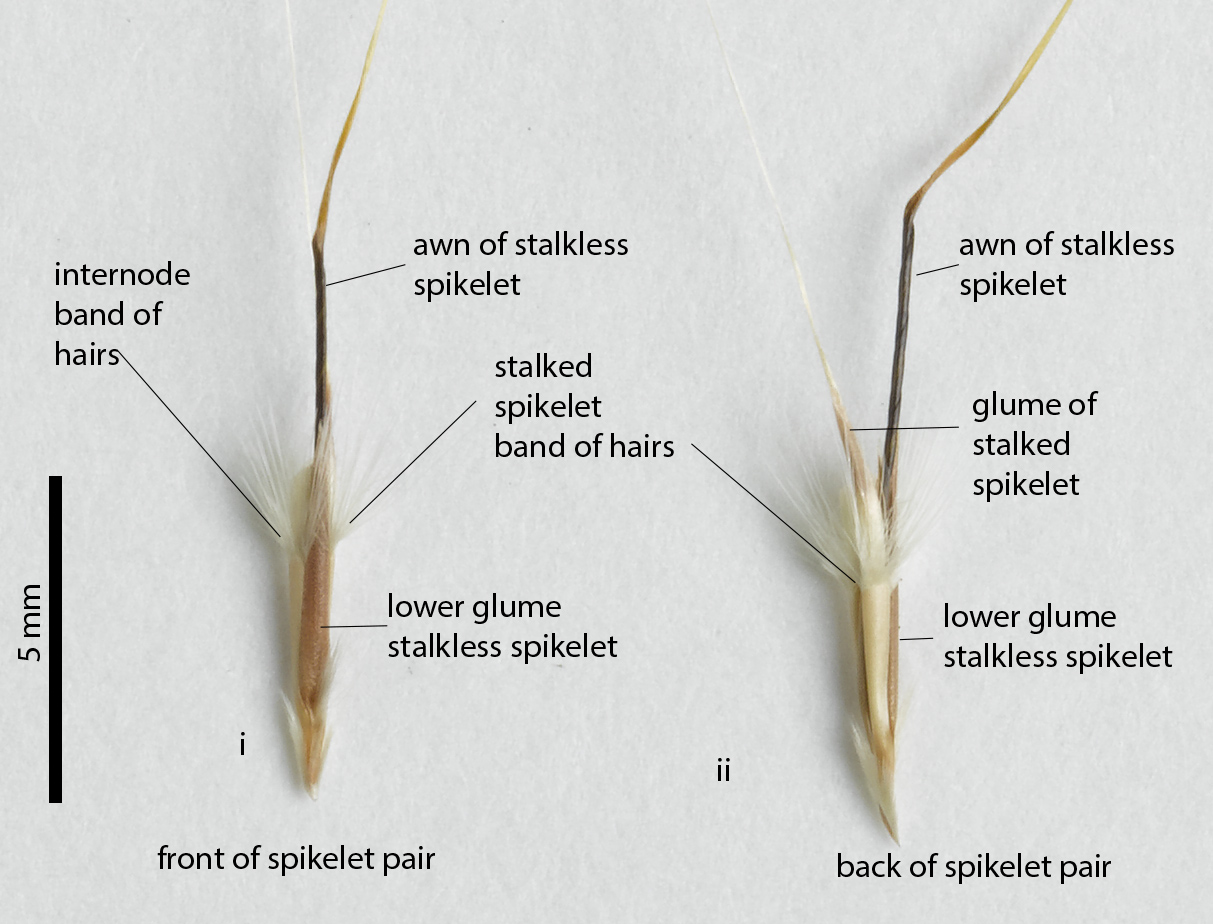
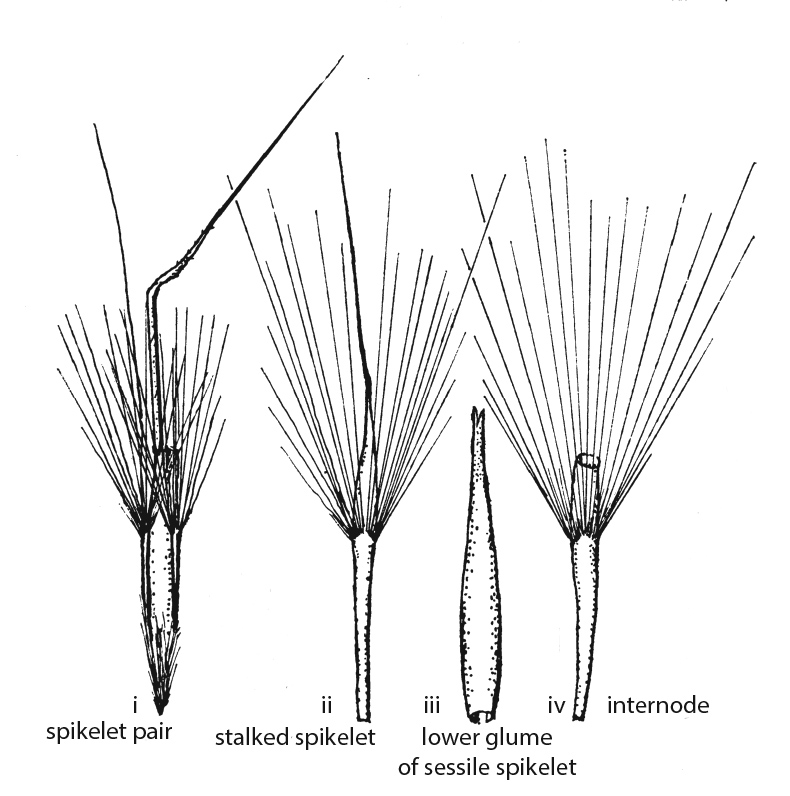
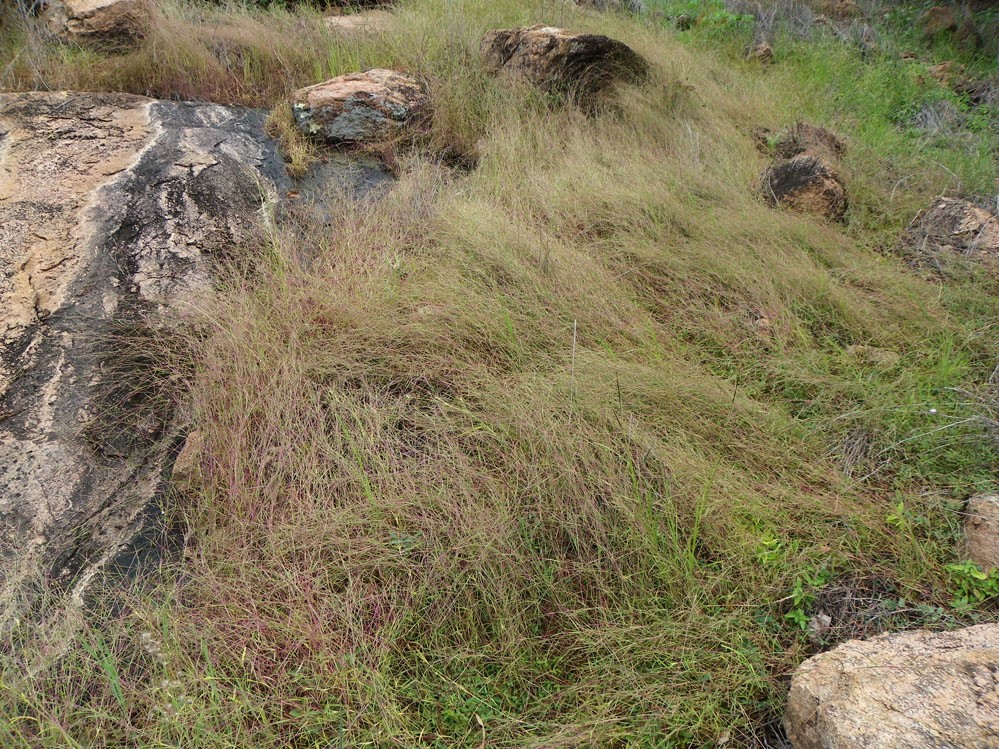
Resources
AVH (2018) Australia’s Virtual Herbarium, Council of Heads of Australasian Herbaria, <http://avh.chah.org.au>, accessed 1 Mar 2018.
Blake, S.T. (1974), Revision of the genera Cymbopogon and Schizachyrium (Gramineae) in Australia. Contributions from the Queensland Herbarium 17: 8-14
Crowley, G.M., Garnett, S.T. and Shephard, S. (2004). Management guidelines for golden-shouldered parrot conservation. Queensland Parks and Wildlife Service, Brisbane.

